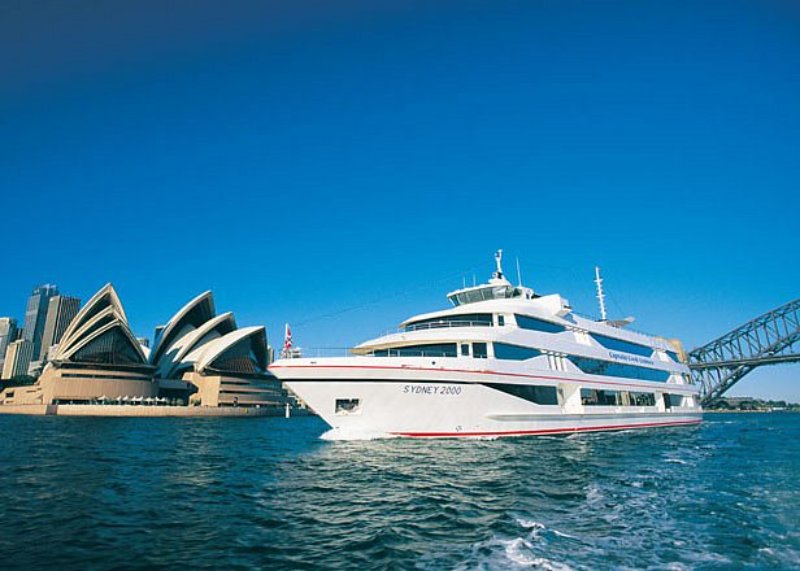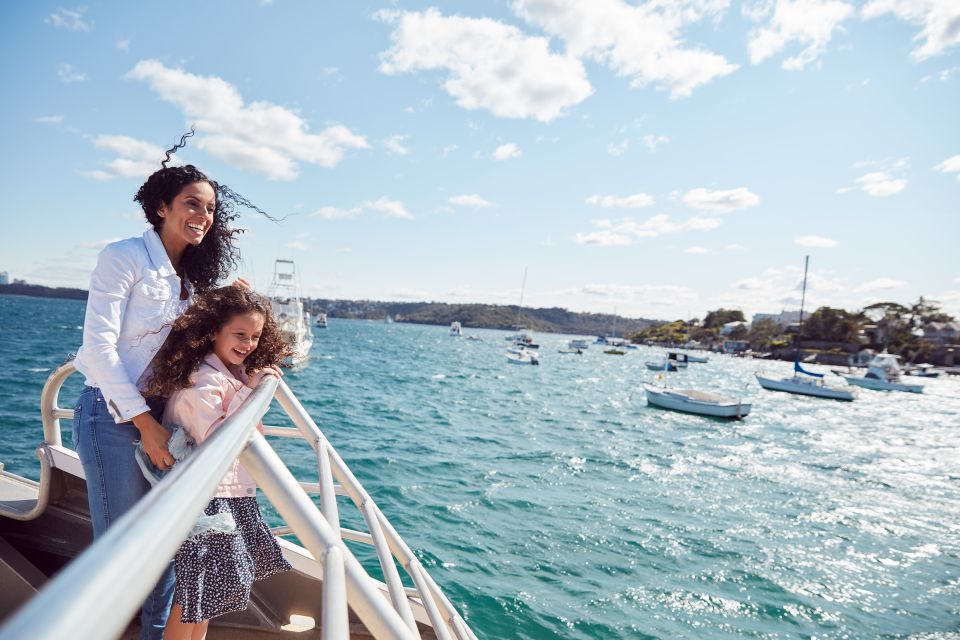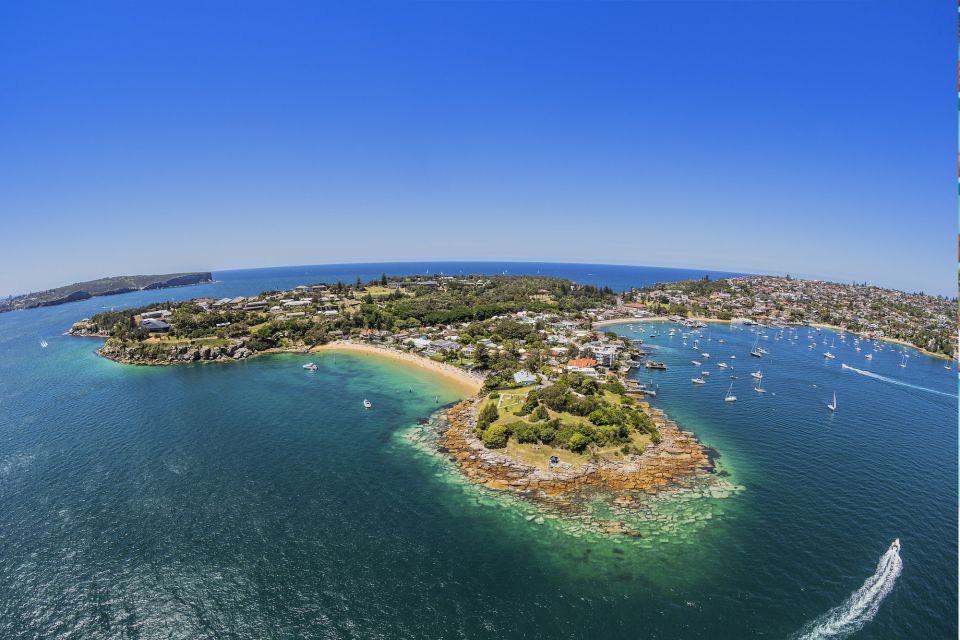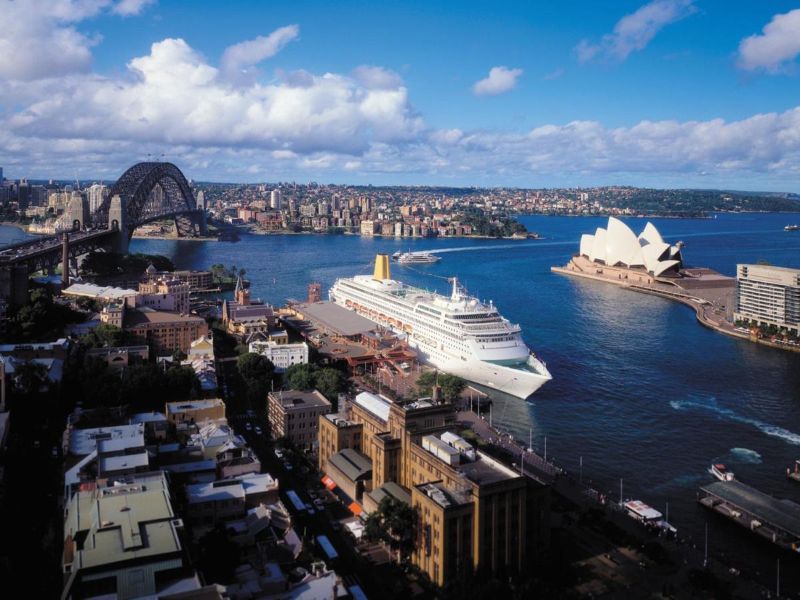Sydney Harbour, known for its stunning beauty and bustling activity, holds more secrets beneath its surface than most people realise. At its deepest point, Sydney Harbour plunges to a remarkable 47 metres (155 feet), making it not just a scenic wonder but also a geographical marvel. This depth contributes to its status as the deepest natural harbour globally.
When you imagine the depths of Sydney Harbour, it’s fascinating to think about what lies hidden beneath the glistening waters of Port Jackson. From shipwrecks to sports cars, the underwater world of this harbour is rich with history and mystery. The varied depths, which average around 13 metres, support a diverse marine ecosystem that thrives in these unique conditions.
Your curiosity about Sydney Harbour’s depths will not only introduce you to its geological features but also to its multifaceted history and ecology. There’s much more lurking below the surface than meets the eye, and this exploration will surely deepen your appreciation of one of Australia’s most iconic harbours.
Table of Contents
Geography of Sydney Harbour

Sydney Harbour, also known as Port Jackson, is a stunning example of natural beauty and complex geographic features. Its unique formation and significant depth make it a fascinating subject for those interested in marine and coastal environments.
Natural Features and Formation
Sydney Harbour is a drowned river valley, known geologically as a ria. This formation occurred thousands of years ago when rising sea levels flooded the valleys formed by ancient rivers. The result is a stunning array of deep channels, scenic cliffs, and varied estuarine environments.
Port Jackson boasts a combination of sheltered waters and jagged coastlines, making it a compelling mix of rugged natural beauty and calm, navigable waters. In addition, cliffs and deep gouges add to the harbour’s picturesque quality, offering breathtaking vistas and diverse marine habitats.
Comparative Depth Analysis
Sydney Harbour holds the title of the deepest natural harbour in the world, featuring a maximum depth of 60 metres and an average depth of 13 metres.
This significant depth includes both deep shipping channels and more shallow estuarine areas, with channels ranging from 28 to 45 metres. These depths allow for the accommodation of large vessels and contribute to the harbour’s status as a major port. The varied depths also support an array of marine life and ensure safe access for recreational activities and commercial shipping.
Hydrographic Surveys and Measurement Techniques

Hydrographic surveys in Sydney Harbour play a critical role in maintaining safe navigation routes and understanding underwater topography. Techniques have evolved from historical methods to sophisticated modern technology like multibeam echosounders.
Historical Hydrographic Surveys
In the early days, hydrographic surveyors used lead lines to measure the depth of Sydney Harbour. This method involved dropping a weighted line overboard and measuring the length of the line when it touched the seafloor.
These surveys were labor-intensive and provided a relatively limited and less accurate picture of the underwater terrain. Despite these limitations, they were crucial in mapping navigational routes and avoiding underwater hazards for ships.
Later, single-beam sonar technologies replaced lead lines, offering more precise measurements and better data collection. These technologies bounced sound waves off the seafloor, but they still required multiple passes to map large areas, making the process time-consuming.
Modern Multibeam Echosounder Use
Today, hydrographic surveys in Sydney Harbour use advanced multibeam echosounders, which provide highly accurate and detailed 3D images of the seafloor. A single pass of a ship equipped with a multibeam echosounder can cover up to eight times the water depth, making these surveys both efficient and comprehensive.
Multibeam echosounders work by emitting sound waves in a fan shape beneath the ship. The time it takes for the sound waves to bounce back to the receiver is used to calculate depth. This results in high-resolution maps that help in identifying underwater hazards, such as shipwrecks or submerged obstacles.
These modern techniques allow for continuous monitoring and updating of underwater topography, ensuring shipping channels and berths remain safe and navigable. Surveys are often conducted by specialised teams using state-of-the-art equipment, leading to more precise and reliable navigational charts.
Marine Environments and Biodiversity

Sydney Harbour’s marine environments are remarkably diverse, underpinned by various habitats and unique geological features. The harbour’s ecology supports a rich biodiversity, including thousands of marine species and various critical habitats.
Wildlife in Sydney Harbour
You can find a stunning array of marine life in Sydney Harbour. The area is home to over 3,000 marine species, including fish, invertebrates, and mammals. Sharks are among these residents, including species like the Port Jackson shark and wobbegong.
Pollution is a concern impacting these marine habitats, but efforts are underway for restoration. Projects focus on enhancing water quality and rebuilding habitats for vulnerable species.
The harbour’s natural harbour structure, with deep channels and shallow areas, supports this rich biodiversity, making it a crucial environmental asset.
Maritime Traffic and Navigation

Navigating Sydney Harbour requires meticulous planning and precision. The harbour’s shipping lanes, safety measures, and recreational boating activities play crucial roles in ensuring smooth and secure maritime operations.
Shipping Lanes and Channels
Sydney Harbour accommodates a significant amount of shipping traffic due to its status as a major international port. Shipping lanes and channels are carefully marked and maintained to direct vessels efficiently. Large ships, including container ships and bulk carriers, follow these designated paths to avoid collisions and ensure timely deliveries.
Hydrographic surveys are regularly conducted to update nautical charts, reflecting changes in the harbour floor. These charts help mariners navigate safely amid busy traffic. Barges and other support vessels frequently use these lanes, maintaining a steady flow of goods and materials across the harbour.
Safety and Obstacle Management
Safety in Sydney Harbour’s shipping lanes is paramount. Hydrographic survey teams have the critical task of identifying and charting potential obstacles on the harbour floor. This includes debris, rocks, and sunken vessels that could pose a threat to safe navigation. Advanced sonar and 3D imaging are employed to detect and map these dangers in detail.
Regular patrols and monitoring by the Port Authority of New South Wales ensure that any obstacles are promptly removed or marked with buoys. Safe navigation protocols are strictly followed to protect vessel integrity and safeguard human lives. Emergency response teams are on standby to address any incidents swiftly.
Recreational Boating and Water Sports
Sydney Harbour is not just a bustling commercial port; it is also a popular spot for recreational boating and water sports. Pleasure boats, yachts, and kayaks frequently dot the waters, especially on weekends and holidays. Designated areas ensure that recreational traffic does not interfere with commercial shipping lanes, promoting a harmonious coexistence.
Boating regulations are enforced to maintain order and safety. Speed limits, no-wake zones, and restricted areas are clearly marked to guide recreational users. Harbour Watch patrols provide assistance and enforce rules, ensuring that everyone enjoys a safe and pleasant experience. This balance of commercial and recreational use highlights Sydney Harbour’s diverse maritime appeal.
Sydney Harbour’s Historical Significance

Sydney Harbour boasts a remarkable history rich with shipwrecks and the development of ports that shaped Australian maritime activities. It’s a harbour that tells stories of past maritime explorations and the evolution of shipping infrastructure.
Shipwrecks and Historical Vessels
The waters of Sydney Harbour are steeped in history, evidenced by the numerous shipwrecks lurking beneath its waves. One notable shipwreck is the TSS Currajong, a steel-hulled tram steamer that met its fate in 1910 after a collision. These shipwrecks provide a window into the past, preserving artifacts and giving us insight into maritime life.
Shipwrecks not only captivate historians and divers but also contribute to our understanding of navigational hazards and maritime practices from bygone eras.
Development of Ports and Harbours
The development of Sydney’s ports and harbours has been instrumental in its growth as a major international city. Since the early 19th century, significant efforts have transformed the harbour’s landscape from a natural estuary into a bustling maritime hub.
Iconic ports such as Port Jackson and Darling Harbour have undergone considerable changes to accommodate growing maritime traffic. These developments have included constructing docks, shipping facilities, and infrastructure, ensuring that Sydney Harbour remains a vital link in global maritime trade.
Historical port developments also highlight the evolution of maritime engineering and city planning that has allowed Sydney to thrive in an increasingly interconnected world.
Infrastructure and Human Impact

Sydney Harbour is subject to various infrastructure projects and human activities, which have significantly altered both its landscape and ecosystem.
Sydney Harbour Bridge and Tunnels
The Sydney Harbour Bridge, an iconic structure opened in 1932, spans the harbour and connects the northern and southern shores. Made of steel and concrete, the bridge has contributed to the area’s economic and social development. Beneath the bridge, the Sydney Harbour Tunnel, completed in 1992, facilitates additional traffic flow and eases congestion. This tunnel runs deep under the harbour bed, further influencing the seafloor’s structure. While these infrastructures reflect human ingenuity, they have also affected marine habitats and water flow patterns.
Human-Caused Changes to the Seafloor
Human activities have reshaped the seafloor of Sydney Harbour. The eastern part of the harbour has seen changes in water depth due to dredging operations and construction work. Objects such as concrete blocks, steel poles, and discarded items like furniture, shopping trolleys, cars, and motorbikes litter parts of the harbour floor. These objects alter habitats and can be hazardous for marine life. Additionally, human structures such as seawalls have replaced natural habitats, leading to significant ecological changes.
Recreational Activities and Amenities

Sydney Harbour offers a diverse range of recreational activities and amenities. From sunbathing on beautiful beaches to sailing on its deep and scenic waters, there’s something for everyone to enjoy.
Beaches and Swimming Spots
Sydney Harbour hosts a variety of beaches that are perfect for swimming and sunbathing. Balmoral Beach and Nielsen Park are popular choices for families, offering gentle surf and plentiful amenities like picnic areas and cafes. The clear waters of these spots are ideal for a refreshing dip, especially during the warm summer months.
For those seeking a more secluded experience, Shark Beach and Milk Beach offer quieter alternatives with stunning views of the harbour and the Sydney skyline. These spots are also great for snorkelling, providing a glimpse of the diverse marine life that inhabits the harbour. Lifeguards are often on duty at the main beaches, ensuring a safe environment for swimming.
Sailing and Boating Services
Sydney Harbour is renowned for its excellent sailing and boating facilities. The deep waters accommodate vessels of all sizes, from small kayaks to large yachts. For sailing enthusiasts, various marinas such as the Cruising Yacht Club of Australia and the Royal Sydney Yacht Squadron offer top-notch services, including berthing and sailing courses.
Boat hire services are available for those looking to explore the harbour at their own pace. Companies like Sydney by Sail and EastSail provide options from luxury yachts to more budget-friendly choices. Concierge services are often included, offering personalised itineraries and even catering on board. This makes for a perfect day out, whether you’re an experienced sailor or a beginner.
Environmental Conservation and Restoration Efforts

Sydney Harbour, known for its breathtaking beauty, is also a focal point for significant environmental conservation and restoration efforts aimed at protecting and enhancing its diverse marine ecosystem.
Ecosystem Protection Initiatives
Efforts to protect Sydney Harbour’s ecosystem are extensive and multifaceted. One major initiative is the $9.1 million restoration project, which involves a partnership between the NSW state government, the Taronga Conservation Society Australia, and the Sydney Institute of Marine Science. This project focuses on improving water quality and biodiversity, benefiting species like penguins, seals, seahorses, and turtles.
Living seawalls, a notable project undertaken by the Sydney Institute of Marine Science, involve the installation of hundreds of seawall panels that form microhabitats for marine life. These efforts help to restore essential habitats and promote biodiversity. Additionally, the transplantation of ancient seagrass species and the installation of skeletal fish pods are critical strategies employed to heal and revitalize scarred areas of the seafloor.
Restoration of Historical Shipwrecks
Restoring historical shipwrecks within Sydney Harbour plays a unique role in conservation efforts by enriching marine habitats and preserving cultural heritage. These shipwrecks provide structures that support diverse marine life, creating artificial reefs that boost biodiversity. They offer refuge and breeding grounds for various aquatic species, thereby enhancing conservation outcomes.
Restoration projects involve meticulous cleaning and protection of these wrecks to prevent further decay, ensuring they continue to serve as habitats. By preserving these underwater relics, not only are we safeguarding a piece of history, but we’re also fostering an environment where marine ecosystems can thrive. This dual focus on cultural and natural heritage exemplifies the comprehensive approach taken in Sydney Harbour’s conservation efforts.
Frequently Asked Questions
Sydney Harbour is known for its impressive depth and diverse aquatic environment. This article answers common questions about the harbour’s depths and offers practical information for visitors.
Depth-Related Inquiries
What is the deepest part of Sydney Harbour?
The deepest point of Sydney Harbour reaches 47 meters (155 feet). This part of the harbour is notably around the shipping channels, which require significant depth for safe passage of large vessels.
How deep is the average depth of Sydney Harbour?
The harbour’s average depth is around 13 meters. This varies slightly due to natural and man-made factors, ensuring there’s adequate depth for a variety of watercraft.
Are there areas shallower than the deepest parts?
Yes, the harbour has areas as shallow as 10 meters. These regions are often found closer to the shorelines and are not used for large shipping.
Visitor Information
Can visitors swim in Sydney Harbour?
Yes, you can swim in Sydney Harbour, particularly in designated swimming areas. However, always heed local warnings and regulations regarding water safety and personal health.
Are there tours to explore the depths of the harbour?
Several companies offer boat tours that explore both the surface and underwater features of the harbour. These tours often provide insights into the historical and ecological aspects of Sydney Harbour.
Is it possible to dive in Sydney Harbour?
Diving is permitted in certain areas, but you’ll need to consult local diving guides to understand the best and safest locations. Some spots feature unique underwater landscapes and marine life.
For more detailed information on activities and guidelines, visiting local information centres or official websites could be helpful. Always prioritise safety and follow regulations to ensure an enjoyable visit.
Leave a Reply